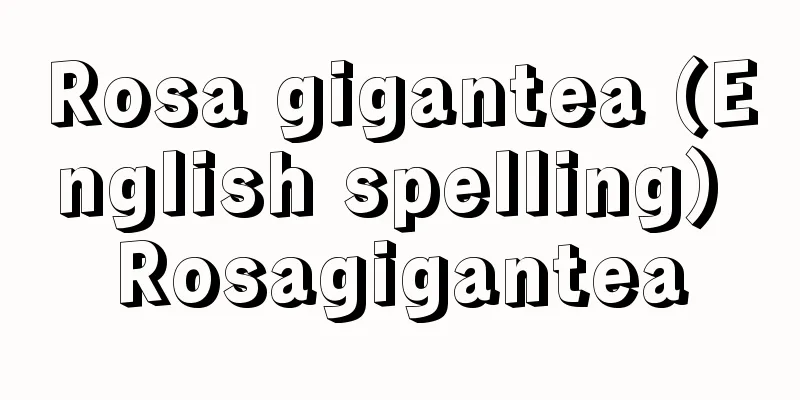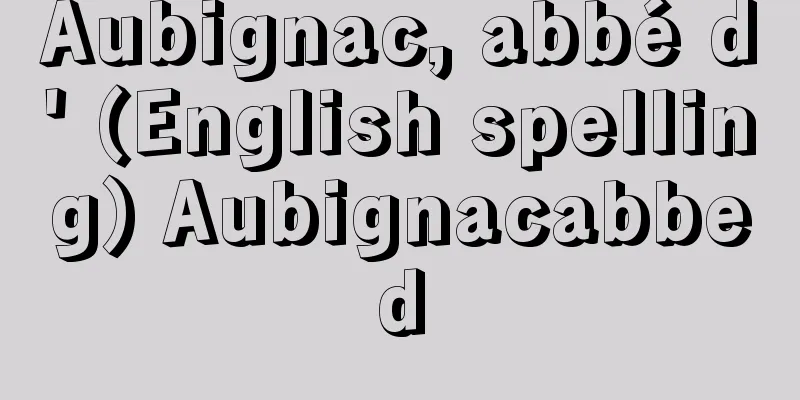Radioactive waste - radioactive waste

|
This refers to various radioactive waste materials that are generated from all parts of the nuclear fuel cycle (nuclear fuel flow) with the use of nuclear energy. The total means and methods for safely isolating these from humans and the biological environment are called processing and disposal. The term management is also used. In the classification generally adopted overseas, for example by the International Atomic Energy Agency (IAEA), radioactive waste is broadly classified into high-level radioactive waste, medium-level radioactive waste, low-level radioactive waste, and radioactive waste containing transuranium nuclides (transuranium is a general term for elements with atomic numbers larger than uranium. It is also called TRU waste) based on the characteristics and amount of radioactive nuclides contained in the waste. On the other hand, in Japan, waste is classified based on the cause of its generation, and is divided into only two types: "high-level radioactive waste" extracted from reprocessing facilities and "low-level radioactive waste" generated from other nuclear facilities. Therefore, when using the Japanese classification (hereinafter referred to as " "), "low-level radioactive waste" also includes decommissioned reactor internal structures with high levels of radioactivity. It should also be noted that TRU waste, which has an extremely long half-life and emits alpha rays, may also be included. [Jun Tateno September 15, 2015] "High-level radioactive waste" and its disposalSpent fuel removed from nuclear power plants is chemically treated at reprocessing plants and separated into three main components: (1) residual uranium, (2) plutonium, and (3) concentrated solution of fission products. The concentrated solution of fission products has an extremely high level of radioactivity, at 10 16 becquerels per cubic meter immediately after processing. In Japan's disposal method, this concentrated solution is melted with glass to create a vitrified body, which is called "high-level radioactive waste." These vitrified bodies are of two types: those generated at the Tokai Reprocessing Plant (Tokai Village, Ibaraki Prefecture) and those returned from overseas after contracted reprocessing. In the case of returned solidified bodies, they are sealed in stainless steel containers called canisters, which are 43 centimeters in diameter, 134 centimeters in height, and about 5 millimeters thick. Each solidified glass weighs 400 kilograms, and the radiation dose on the surface immediately after production is extremely high, at 1,500 sieverts per hour (a 100% lethal dose is reached within 20 seconds). France had returned 1,310 solidified fuel rods by March 2007, and the UK began returning about 850 rods after March 2010. These will be temporarily stored at the High-Level Radioactive Waste Storage Management Center in Rokkasho Village, Aomori Prefecture, and will then be disposed of in a geological repository after a disposal site is determined. If all spent fuel up to the end of December 2014 is processed, a total of 24,800 solidified rods will be generated, including the returned rods. The Rokkasho Reprocessing Plant was in trial operation as of September 2015, but if it goes into full operation in the future, it will reprocess 800 tons of spent fuel per year, generating about 1,000 solidified rods. Before the Fukushima Daiichi Nuclear Power Plant accident in March 2011, the annual amount of spent fuel generated was about 1,500 tons, but this is about half of that. Based on the "Law on Final Disposal of Specified Radioactive Waste" (Law No. 117 of 2000), it was decided that this "high-level radioactive waste" should be disposed of in a geological formation more than 300 meters underground, as described below, and the Nuclear Waste Management Organization of Japan (NUMO) was established in 2000 to carry out this disposal. Cesium and strontium, which account for a large proportion of radioactivity in high-level radioactive waste, decay with half-lives of several decades, but TRU nuclides heavier than uranium, such as plutonium, americium, and curium, which belong to the actinides, have extremely long half-lives of tens of thousands of years, and therefore must be contained for extremely long periods of time. For this reason, in geological disposal, the above-mentioned canisters are sealed in metal containers called overpacks, which are approximately 20 centimeters thick, and then buried underground. However, safe storage for tens of thousands of years is a concept that goes beyond the realm of engineering, and there is no guarantee that it will be achieved. In particular, there is a strong possibility that the overpacks will be damaged by violent crustal movements such as faults, or by corrosion of groundwater. NUMO called for sites to be provided for geological disposal of high-level radioactive waste nationwide, but no local governments responded, and the plan was completely stalled. In response to this situation, the Science Council of Japan issued a recommendation in 2012 entitled "On the Disposal of High-Level Radioactive Waste," calling for a review of the framework for geological disposal and for a new consensus to be reached regarding high-level radioactive waste. In response, the Atomic Energy Commission indicated a policy in which the national government would take the lead in selecting a site, but no concrete prospects for disposal have been established. [Jun Tateno September 15, 2015] Spent fuelSpent fuel removed from nuclear power plants is not usually classified as high-level radioactive waste, but if it is not reprocessed and instead is disposed of in a geological repository (once-through method) as in the United States, it will be considered high-level radioactive waste. In Japan, if reprocessing plants can no longer operate or the policy of full reprocessing becomes unfeasible, the fuel will be treated as high-level radioactive waste. The total amount of unprocessed spent fuel stored within the facilities of each nuclear power plant is approximately 14,200 tons (as of September 2011), accounting for an average of 70% of each storage facility. In addition, a reprocessing plant in Rokkasho Village, Aomori Prefecture, has a pool capacity of nearly 3,000 tons of spent fuel. As such, there is extremely little room to store spent fuel, and an intermediate storage facility for spent fuel (the Recycled Fuel Stockpile Center, for Tokyo Electric Power Company and Japan Atomic Power Company, with a storage capacity of 5,000 tons) has been constructed in Mutsu City, Aomori Prefecture. However, if nuclear power plants are to be restarted in the future, it will clearly be extremely difficult to secure a place to store spent fuel. If they must be operated, spent fuel will likely be stored in a storage facility built on the site of the nuclear power plant. [Jun Tateno September 15, 2015] "Low-level radioactive waste"All waste other than high-level radioactive waste (vitrified waste) discharged from reprocessing plants is "low-level radioactive waste." The main sources are (1) uranium mining and refining, (2) uranium fuel manufacturing and processing (including conversion and enrichment), nuclear fuel reprocessing, plutonium recycling, and other nuclear fuel cycle-related facilities, (3) nuclear reactor operation, closure and dismantling of nuclear facilities, and (4) use of radioisotopes. In reality, a considerable amount of waste is generated in Japan, except for (1). Low-level radioactive waste is usually stored in containers such as 200-liter drums after solidifying the solid or liquid with asphalt or cement. The nuclear fuel cycle facility in (2) has generated 145,000 drums of TRU waste and 104,000 drums of uranium waste. The power plant in (3) has generated 600,000 drums worth of waste, ranging from high-level waste such as control rods and reactor internals to low-level waste such as concrete (all figures are as of 2009). Possible disposal methods include (1) ocean dumping, (2) on-land storage, (3) shallow underground burial, (4) underground injection, and (5) deep geological cavity disposal, and there are examples of these methods being implemented in the United States and the former Soviet Union. Regarding ocean dumping, the London Convention, which aims to prevent marine pollution, came into force in 1975 and prohibited the dumping of high-level radioactive waste into the ocean, but the treaty allows it if the waste is below the standard level. Japan selected two sites in the Pacific Ocean to conduct research on the depth, ocean currents, and organisms, and was planning to carry out test dumping near the Ogasawara Islands, but due to opposition from Palau and other Pacific nations, and a temporary suspension resolution from the Consultative Conference of the Parties to the London Convention, it was decided to shift its focus to on-land storage for the time being. Since the 1990s, the decommissioning of aging power reactors around the country, including the Tokai Nuclear Power Plant (Caulder Hall Reactor) of the Japan Atomic Power Company, has led to the need for concrete measures to dispose of the large amounts of "low-level radioactive waste" (Class 2 waste; Class 1 waste is vitrified waste produced at reprocessing plants, which is "high-level radioactive waste," and TRU waste, which is "low-level radioactive waste." This waste is classified into three types: L1 (relatively high levels of radioactivity), L2 (relatively low levels of radioactivity), and L3 (very low levels of radioactivity), and each type is to be disposed of by subsurface disposal (disposal at a depth sufficient for general underground use), pit disposal (buried in a concrete structure underground at a relatively shallow depth), or trench disposal (buried near the surface and covered with soil). Furthermore, a clearance system has been introduced under the 2005 amendment to the Nuclear Reactor Regulation Act (Act No. 166 of 1957) that allows radioactive waste below the L3 level to be treated as ordinary industrial waste. [Jun Tateno September 15, 2015] [References] | | | |©Shogakukan "> Radioactivity Decay Source: Shogakukan Encyclopedia Nipponica About Encyclopedia Nipponica Information | Legend |
|
原子力エネルギーの利用に伴い、核燃料サイクル(核燃料の流れ)のあらゆる部分から発生するさまざまな放射性の不要物をいう。これらを人間あるいは生物環境から安全に隔離する手段・方法の総体を処理・処分とよんでいる。また、管理managementという用語も用いられる。 海外、たとえば国際原子力機関(IAEA)などで一般に採用されている区分では、放射性廃棄物はその含有する放射性核種の特性と量に注目して、高レベル放射性廃棄物、中レベル放射性廃棄物、低レベル放射性廃棄物、超ウラン核種を含む放射性廃棄物(超ウランtrans uraniumはウランよりも原子番号の大きい元素の総称。TRU廃棄物ともいう)とに大きく分類される。一方、日本では、発生原因に基づいて分類し、再処理施設から取り出される「高レベル放射性廃棄物」と、その他の原子力施設などから発生する「低レベル放射性廃棄物」の2種類にのみ区分されている。したがって、日本の区分(以下「 」として引用)を用いた場合、「低レベル放射性廃棄物」のなかに放射能レベルの高い、廃炉の炉内構造物なども含まれる。またきわめて長い半減期をもちα(アルファ)線を発生するTRU廃棄物なども含まれる場合があることに注意しなければならない。 [舘野 淳 2015年9月15日] 「高レベル放射性廃棄物」とその処分原子力発電所から取り出された使用済み燃料は、再処理工場で化学的処理が施され、大きく分けて(1)燃え残りのウラン、(2)プルトニウム、(3)核分裂生成物の濃縮溶液、の三者に分離される。このうちの核分裂生成物の濃縮溶液は処理直後で1016ベクレル毎立方メートルと、放射能レベルがきわめて高い。日本の処分方法では、この濃縮溶液をガラスとともに溶融して、ガラス固化体をつくる。これが「高レベル放射性廃棄物」である。これらガラス固化体は、東海再処理工場(茨城県東海村)で発生したものおよび、海外で委託再処理を行い返還されたものの2種類がある。返還固化体の場合、直径43センチメートル、高さ134センチメートル、肉厚約5ミリメートルのステンレス製のキャニスターとよばれる容器に封入されている。固化ガラスの量は1本当り400キログラム、製造直後の表面の線量は1500シーベルト毎時(20秒以内で100%の致死線量に達する)ときわめて高い。 フランスからは2007年(平成19)3月までに1310本の固化体が返還済みであり、イギリスからは2010年3月以降、約850本分の返還が開始された。これらは一時的に青森県六ヶ所村の高レベル放射性廃棄物貯蔵管理センターに貯蔵され、その後は処分地を決定のうえ地層処分される予定になっている。2014年12月末までの使用済み燃料を全数処理した場合、返還分も含めると合計2万4800本の固化体が発生する。六ヶ所再処理工場は、2015年9月時点では試運転中であるが、今後、もし本格稼動すると、年間800トンの使用済み燃料の再処理により、約1000本の固化体が発生することになる。2011年3月の福島第一原子力発電所事故以前の使用済み燃料の年間発生量は約1500トンであったが、これは、その半分程度である。 これら「高レベル放射性廃棄物」は、「特定放射性廃棄物の最終処分に関する法律」(平成12年法律第117号)に基づいて、以下に述べる地下300メートル以深の地層処分を行うことが決められ、その実施主体として、2000年に原子力発電環境整備機構(NUMO(ニューモ):Nuclear Waste Management Organization of Japan)が発足した。 高レベル放射性廃棄物のなかで、放射能として大きな割合を占めるセシウムやストロンチウムは数十年の半減期で減衰するが、アクチノイドに属するプルトニウム、アメリシウム、キュリウムなど、ウランより重いTRU核種は数万年などという、きわめて長い半減期をもつために、超長期間にわたって、これを閉じ込めなければならない。このため地層処分においては、前記のキャニスターを、さらにオーバーパックとよばれる肉厚20センチメートル近い金属製容器に密封して地中に埋めることになっている。しかしながら、数万年間の安全な保管というのは、工学的範疇(はんちゅう)を超える概念であり、達成される保証はない。とくに断層など激しい地殻変動や、地下水の腐食などによって、オーバーパックが損傷する可能性は十分にありうる。 NUMOは高レベル放射性廃棄物を地層処分するための敷地提供を全国的に呼びかけたが、これに応じる自治体は現れず、計画はまったく行き詰まっていた。このような事態に対して、2012年に日本学術会議は勧告「高レベル放射性廃棄物の処分について」を発表し、地層処分の枠組みを見直し、改めて高レベル放射性廃棄物に関する合意形成を図ることを呼びかけた。これに対して原子力委員会は、国が前面にたって敷地選定を行うことなどの方針を示したが、処分の具体的な見通しはたっていない。 [舘野 淳 2015年9月15日] 使用済み燃料原子力発電所から取り出された使用済み燃料は、通常は高レベル放射性廃棄物には分類されないが、アメリカのように再処理を行わず、使用済み燃料のままで地層処分を行う場合(ワンス・スルー方式)は、高レベル放射性廃棄物に相当する。日本でも再処理工場が稼動できなくなったり、全量再処理の方針が実現不能となったりした場合は、高レベル放射性廃棄物として扱われることとなる。 各原子力発電所の施設内に貯蔵されている、未処理の使用済み燃料は合計約1万4200トン(2011年9月時点)で、各貯蔵施設の平均70%を占める。このほかに青森県六ヶ所村にある再処理工場に、貯蔵プール容量3000トン近い使用済み燃料が貯蔵されている。このように使用済み燃料を貯蔵する余地はきわめて逼迫(ひっぱく)しており、青森県むつ市に使用済み燃料の中間貯蔵施設(リサイクル燃料備蓄センター。東京電力と日本原子力発電が対象で、貯蔵容量は5000トン)が建設されているが、今後原子力発電所が再稼動した場合、使用済み燃料の貯蔵場所の確保がきわめて困難となることは明らかである。どうしても稼動するならば、使用済み燃料は原子力発電所の敷地内に貯蔵施設をつくり保存することとなるだろう。 [舘野 淳 2015年9月15日] 「低レベル放射性廃棄物」再処理工場から排出される高レベル放射性廃棄物(ガラス固化体)以外はすべて「低レベル放射性廃棄物」である。おもな発生源は、(1)ウランの採鉱製錬、(2)ウラン燃料の製造加工(転換、濃縮を含む)、核燃料再処理、プルトニウム再循環等核燃料サイクル関連施設、(3)原子炉運転、原子力施設の閉鎖解体、(4)ラジオ・アイソトープの利用、である。日本では(1)を除いて、現実に相当量の廃棄物が発生している。 低レベル放射性廃棄物は、通常は固体または液体をアスファルト、セメントなどで固化したのち200リットルのドラム缶などの容器に封入して保管される。(2)の核燃料サイクル関連施設からは、TRU廃棄物としてドラム缶14.5万本、ウラン廃棄物としてドラム缶10.4万本が発生している。(3)の発電所関連では、制御棒・炉内構造物など高レベルのものからコンクリート等低レベルのものを含めてドラム缶60万本分が発生している(数値はいずれも2009年時点)。 処分方式には、(1)海洋投棄、(2)陸地保管、(3)浅層地中埋没、(4)地中圧入、(5)深い地層空洞処分、などが考えられ、アメリカ、旧ソ連などでは実施された例がある。海洋投棄については、海洋の汚染防止を目的としたロンドン条約が1975年に発効し、高レベル放射性廃棄物の海洋投棄は禁止されたが、規準以下ならば条約上は投棄してよいことになる。日本は太平洋で2地点を選んで、深度、海流、生物などについての調査を行い、小笠原(おがさわら)諸島付近への試験投棄を計画中であったが、パラオをはじめとする太平洋諸国の反対と、ロンドン条約締約国協議会議の一時停止決議などにより、当面は陸地保管に重点を移すこととなった。 なお1990年代ころから、日本原子力発電の東海発電所(コールダーホール型原子炉)をはじめとして、各地の老朽化した発電用原子炉の廃炉によって大量に発生する「低レベル放射性廃棄物」(第二種廃棄物。第一種廃棄物は、「高レベル放射性廃棄物」である再処理工場から生じるガラス固化体と、「低レベル放射性廃棄物」のうちTRU廃棄物)の処分の具体的対策の必要に迫られている。これら廃棄物はL1(比較的放射能レベルが高いもの)、L2(比較的放射能レベルが低いもの)、L3(きわめて放射能レベルが低いもの)の3種に区分され、それぞれ余裕深度処分(一般的な地下利用に対して十分に余裕をもった深度への処分)、ピット処分(地下のコンクリート構造物に入れて比較的浅い地中に埋める)、トレンチ処分(地表近くに埋めて盛り土で覆う)を行う埋設処分が施されることになっている。さらにL3レベルより低い放射性廃棄物は、2005年の「原子炉等規制法」(昭和32年法律第166号)の改正に基づき、通常の産業廃棄物として扱うことができるクリアランス制度が導入されている。 [舘野 淳 2015年9月15日] [参照項目] | | | |©Shogakukan"> 放射能の減衰 出典 小学館 日本大百科全書(ニッポニカ)日本大百科全書(ニッポニカ)について 情報 | 凡例 |
Recommend
Karl von Eckartshausen
1752‐1803 German mystic. He served as a judge and ...
Ontologia
…The term goes back to the Latin ontologia, or ph...
Gyges (English spelling)
King of Lydia (r. 685-657 BC). He killed King Cand...
Amphora (English spelling)
A type of Greek vase. It means "double-handle...
Iga Province
Former name of the northwestern part of Mie prefe...
Roquefort cheese
…It is aged for 2 to 3 months and has a slightly ...
Tarantula - Tarantula (English spelling)
Tarantulas are a special type of spider that belo...
Transportation Museum
This museum aims to promote the dissemination and ...
Wool (English spelling)
Wool. A fiber used to make yarn and woolen fabrics...
"Different Orders of Instruction" - Isei Teikininourai
…In the Muromachi period, problems similar to mat...
Asama Sanshuku
...It is believed that in ancient times, this are...
Hoei Gold and Silver
Coins minted from 1706 to 1711 (3rd to 8th years o...
relative index of refraction
...The angle between the normal to the boundary s...
Solid waste - solid waste
This refers to various types of garbage and unwant...
Whipworm - Whipworm
A round worm belonging to the nematode family. It ...









